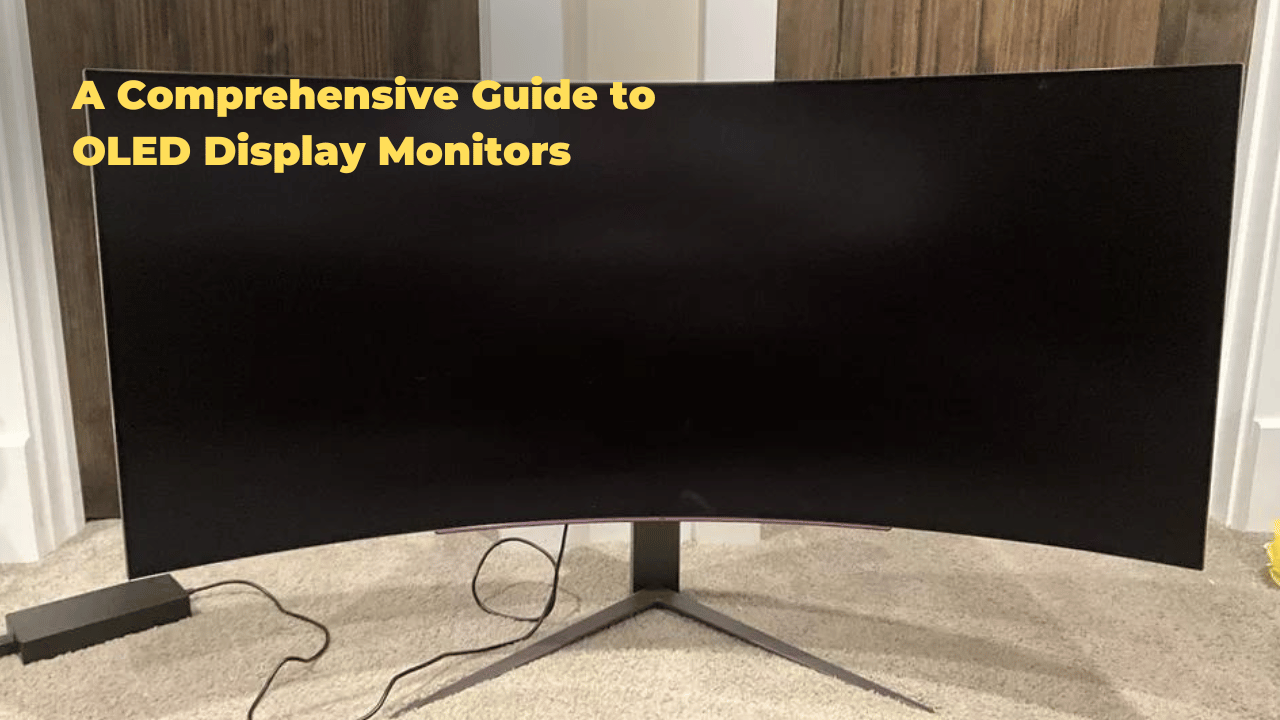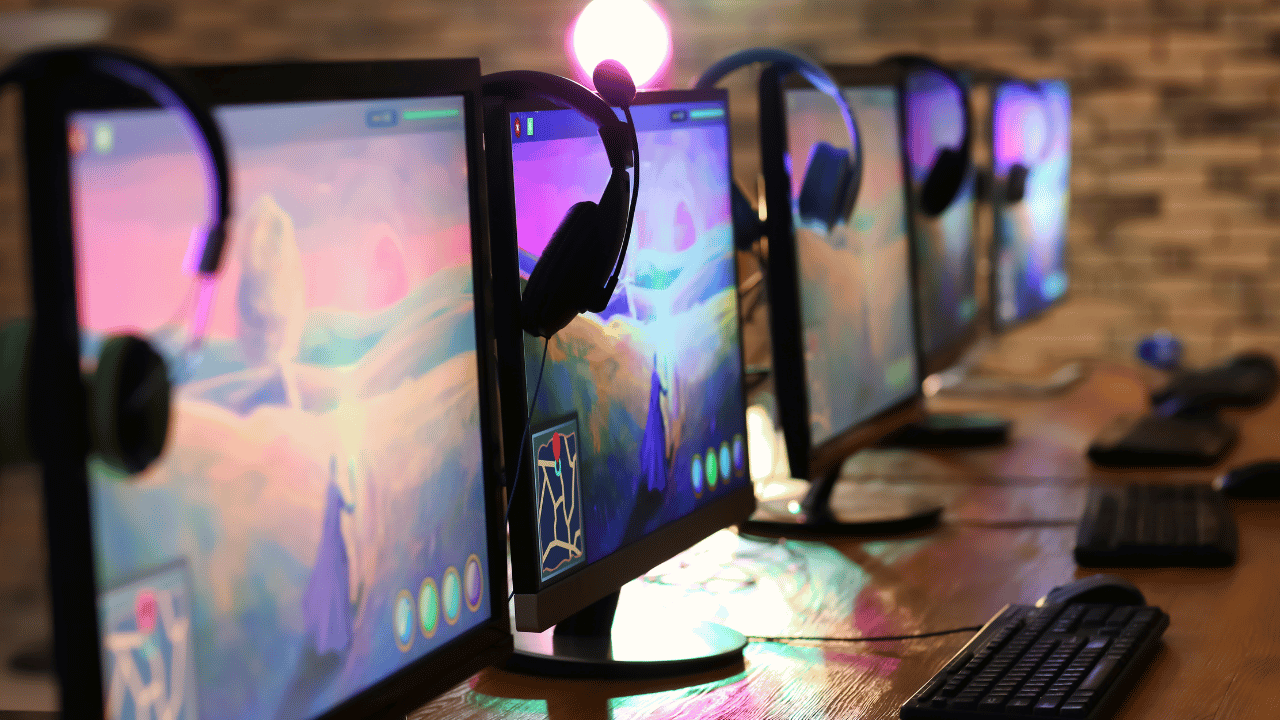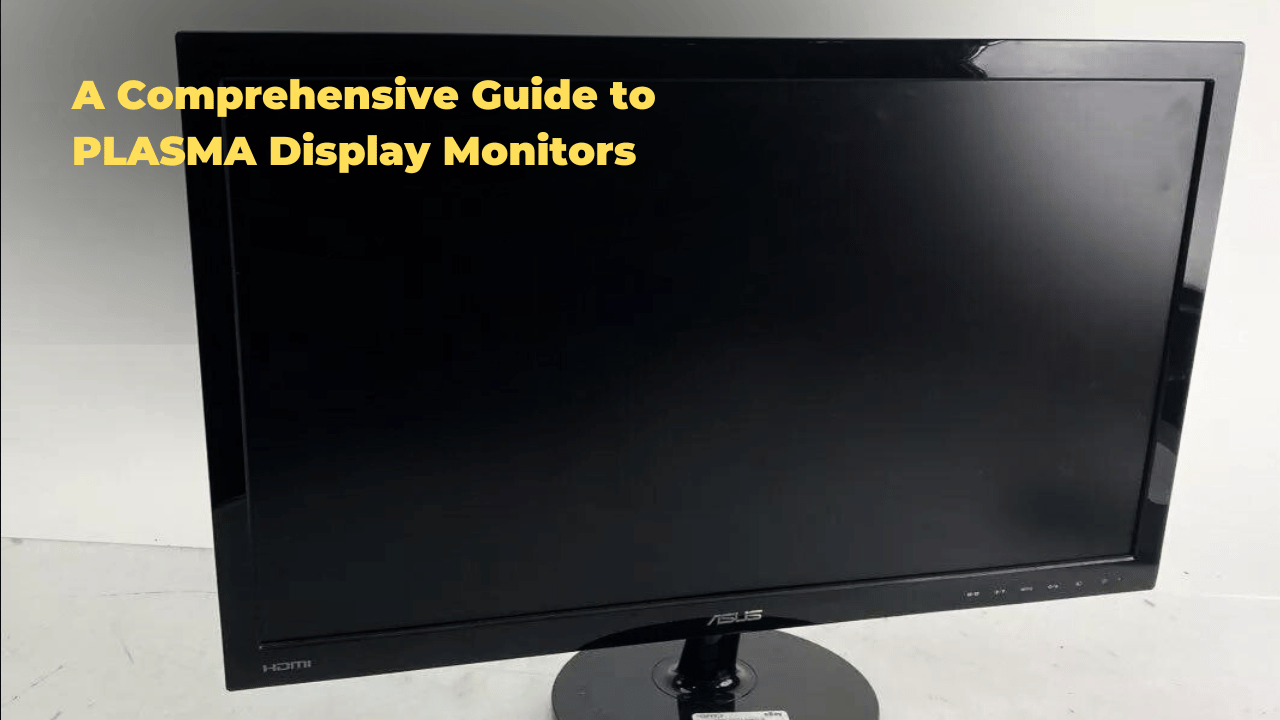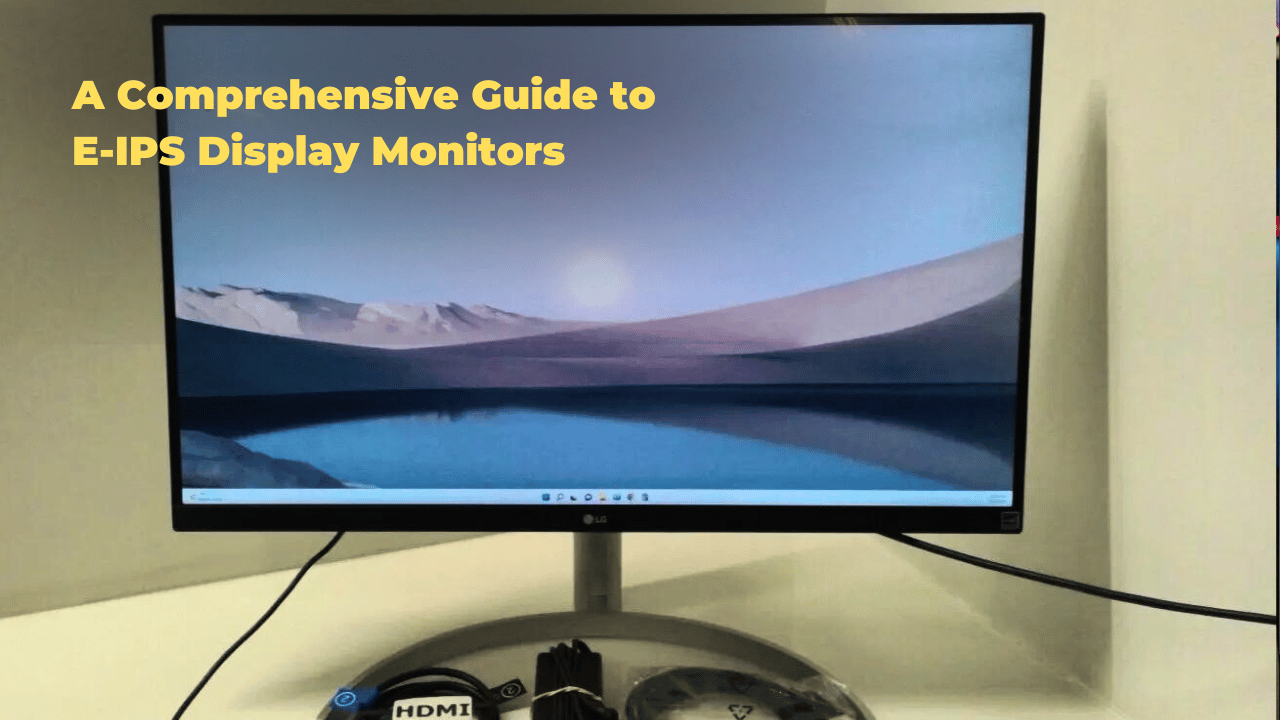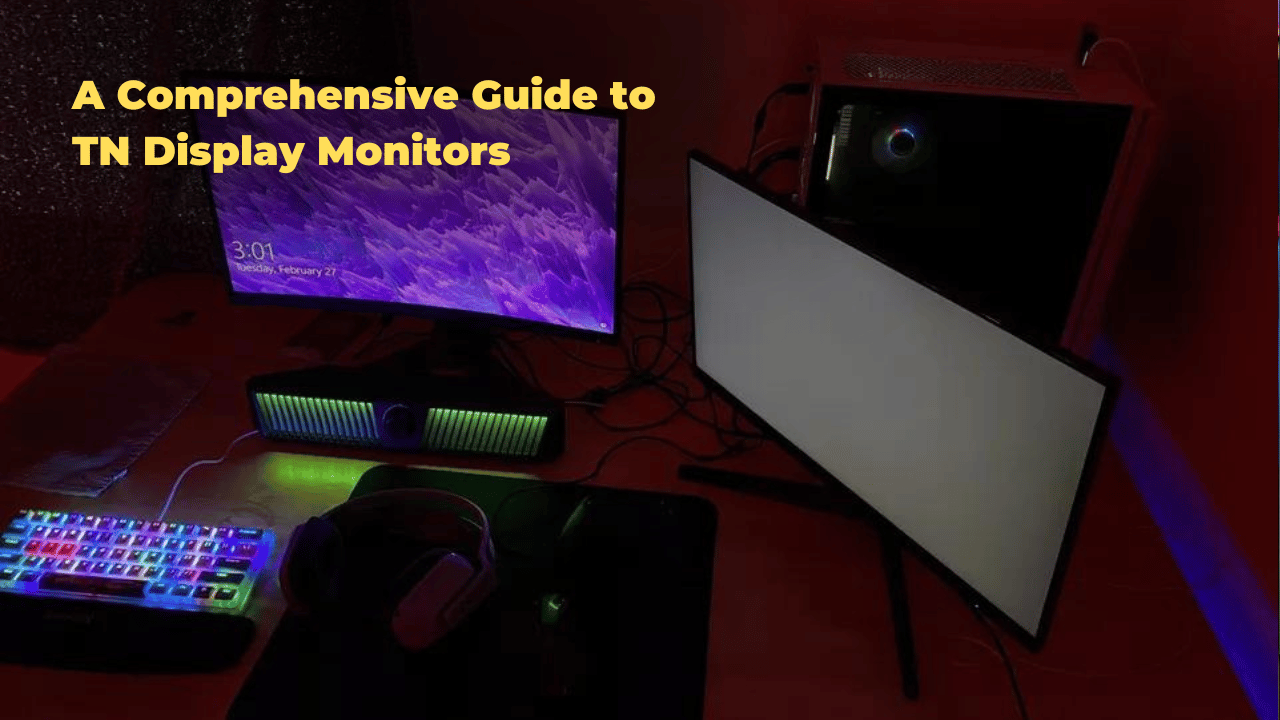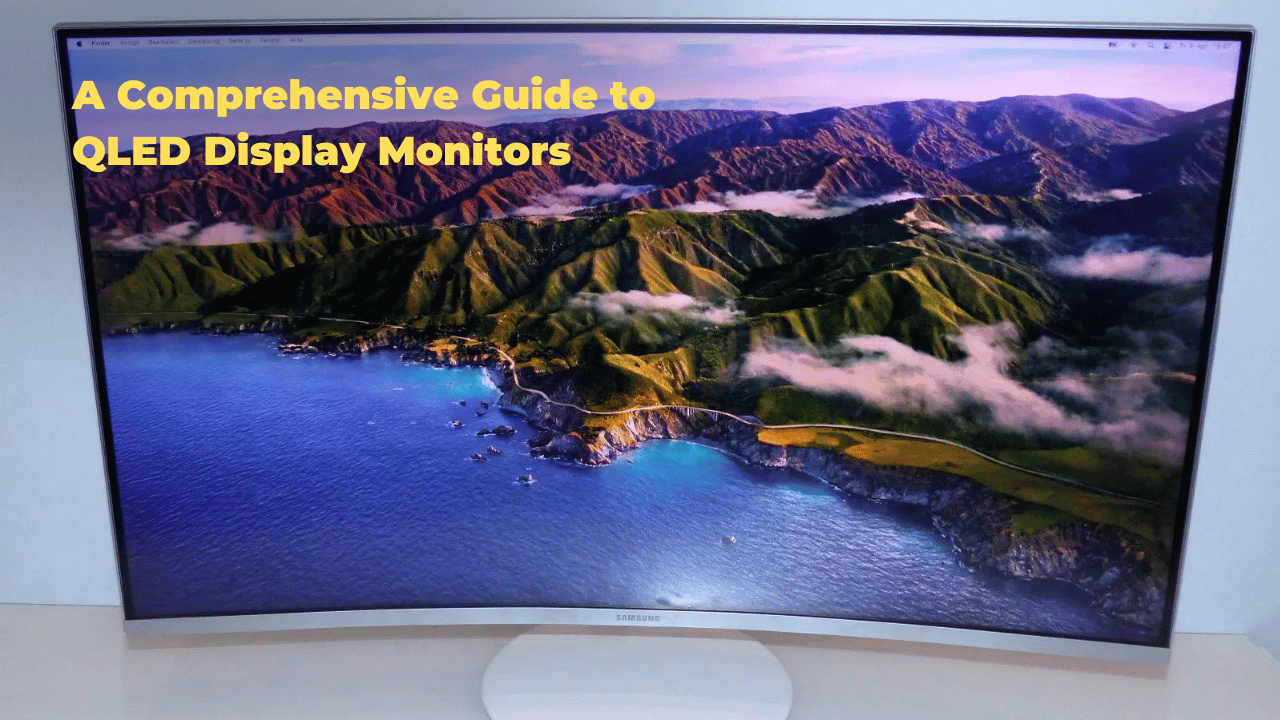OLED display monitors boast exceptional color accuracy, fast response times, and eco-friendly designs, making them a coveted upgrade for professionals and enthusiasts. OLED technology consists of an anode, cathode, and organic layer, offering benefits like high contrast ratios, energy efficiency, and slim designs. Compared to LED displays, OLEDs excel in color accuracy, immersive viewing, and environmental sustainability.
To choose the right OLED monitor, consider your specific needs, color accuracy, and refresh rate. Debunking common misconceptions, modern OLED panels last up to 50,000 hours with mitigated image retention and burn-in. As you explore the world of OLED displays, you’ll uncover the nuances that set them apart.
Key Takeaways
- Monitors with OLED display: LG C2 Series, Sony A95K, ASUS ROG Strix OLED PG42UQ
- Invest in OLED for superior color accuracy, fast response time, and energy efficiency, ideal for professionals and gamers.
- Prioritize specific needs, such as color gamut coverage, refresh rate, and HDR support, to enhance the viewing experience when choosing an OLED monitor.
- OLED panels are durable, lasting up to 50,000 hours, with technologies mitigating image retention and burn-in, addressing common misconceptions about OLED durability.
- Select the right OLED size and resolution, considering room dimensions, seating distance, and use cases, for optimal visual quality, such as 4K or QHD.
- Top brands like LG, Sony, ASUS, and Dell offer unique features, including infinite contrast ratios, exceptional color accuracy, and NVIDIA G-Sync, to suit different needs and budgets.
- Color accuracy is crucial for professionals, with OLED offering superior color gamut coverage and precise color representation.
- Fast response time is essential for gamers, with OLED providing swift motion and reduced blur.
- Energy efficiency is a key benefit, with OLED monitors consuming less power and reducing environmental impact.
- HDR support enhances the viewing experience, with OLED offering improved contrast, color, and brightness.
- OLED monitors are suitable for various use cases, including gaming, video editing, graphic design, and entertainment.
OLED Monitor Specifications
| Feature | OLED Monitor | LCD Monitor |
|---|---|---|
| Technology | Self-emissive | Backlit |
| Black Levels | Perfect | Limited |
| Contrast Ratio | Infinite | High |
| Color Accuracy | Excellent | Good |
| Response Time | Fast | Faster |
| Viewing Angles | Wide | Narrower |
| Burn-in | Potential | No |
| Price | Higher | Lower |
Understanding OLED Technology
How OLED Displays Work
Organic light-emitting diode (OLED) technology is a type of emissive display technology that utilizes a layer of organic material to produce light when an electric current is applied, thereby allowing for the creation of thin, flexible, and energy-efficient displays. This innovative technology enables the production of high-quality displays with unparalleled color accuracy and contrast ratio. OLEDs consist of an anode, cathode, and an organic layer sandwiched between them. When an electric current is applied, the organic material emits light, producing a vibrant and rich visual experience.
OLED Display Lifespan: Overcoming Degradation
One of the critical factors affecting OLED displays is their lifespan. The degradation of the organic material over time can lead to a decrease in brightness and color accuracy. However, advancements in manufacturing processes have greatly improved OLED lifespan, with modern OLED panels capable of maintaining their performance for thousands of hours.
Color Accuracy and Immersive Viewing Experience
OLED technology is renowned for its exceptional color accuracy, with the ability to produce true blacks and a wide color gamut. This results in a more immersive viewing experience, making OLED displays ideal for applications requiring precise color representation, such as professional graphics design and video editing.
OLED Applications: Ideal for Color-Critical Industries
By understanding the fundamental principles of OLED technology, users can appreciate the unique benefits and characteristics of OLED display monitors, making them an ideal choice for industries that require precise color representation, such as:
- Professional graphics design
- Video editing
- Medical imaging
- Digital art and design
Benefits of OLED Display Monitors
With their exceptional color accuracy, fast response time, and energy efficiency, OLED display monitors offer a range of benefits that make them an attractive choice for professionals and enthusiasts alike.
Eco-Friendly Computing: Energy Efficiency of OLED Displays
One of the most significant advantages of OLED display monitors is their low power consumption. By using organic compounds to produce light, OLED panels consume significantly less power than traditional LED displays. This not only reduces energy costs but also contributes to a more environmentally friendly computing experience.
Color Perfection: Wider Color Gamut and Higher Contrast Ratio
OLED display monitors are renowned for their vibrant colors, thanks to their wider color gamut and higher contrast ratio. This results in more accurate and vivid color representation, making them particularly well-suited for applications such as graphic design, video editing, and gaming, where color accuracy and image quality are paramount.
Design and Portability: Slimmer and Lighter Construction
OLED display monitors boast a thin design, featuring slimmer and lighter construction. This enhanced portability and space-saving design make them ideal for professionals and enthusiasts who need to work on-the-go or in confined spaces.
Uncompromised Image Quality: Wide Viewing Angles
OLED display monitors offer wide viewing angles, ensuring uncompromised image quality at any angle. This makes them perfect for collaboration and shared viewing experiences, where multiple users need to view the screen from different angles.
Fast Response Time: Reduced Motion Blur and Ghosting
With their fast response time, OLED display monitors reduce motion blur and ghosting, resulting in enhanced gaming and video performance. This makes them a top choice for gamers and video enthusiasts who demand the best visual experience.
| Benefit | Description | Advantage |
|---|---|---|
| Energy Efficiency | Lower power consumption | Reduced energy costs and environmental impact |
| Vibrant Colors | Wider color gamut and higher contrast ratio | More accurate and vivid color representation |
| Thin Design | Slimmer and lighter construction | Enhanced portability and space-saving design |
| Wide Viewing Angles | Uncompromised image quality at any angle | Improved collaboration and shared viewing experiences |
| Fast Response Time | Reduced motion blur and ghosting | Enhanced gaming and video performance |
OLED Vs LED Display Monitors
The debate between OLED and LED display monitors is a crucial one for professionals and enthusiasts alike, as each technology offers distinct advantages that can significantly impact the overall computing experience.
Display Technology Comparison: OLED and LED Strengths
When it comes to display technology, OLED and LED have unique strengths that cater to different needs and preferences.
Color Accuracy and Immersive Viewing
OLED display monitors excel in terms of color accuracy, offering superior color representation due to their ability to produce true blacks, resulting in a more immersive viewing experience.
Energy Efficiency and Environmental Sustainability
OLED display monitors consume less power compared to LED display monitors, making them a more environmentally friendly option.
Design Flexibility and Portability
OLED display monitors have a slimmer and more flexible design, making them ideal for portable applications.
Contrast Ratio and Visual Representation
OLED display monitors have an infinite contrast ratio, resulting in a more detailed and nuanced visual representation.
LED Display Monitors: Brightness and Affordability
LED display monitors offer a higher brightness level and a lower price point, making them an attractive option for those on a budget or requiring high brightness levels.
Choosing the Right Display Monitor for Your Needs
Ultimately, the choice between OLED and LED display monitors depends on individual priorities and requirements. Professionals who require precise color representation and energy efficiency may prefer OLED display monitors, while those on a budget or requiring high brightness levels may opt for LED display monitors.
Comparison Table: OLED vs LED Display Monitors
| Feature | OLED | LED |
|---|---|---|
| Color Accuracy | Superior | Good |
| Energy Efficiency | High | Low |
| Design Flexibility | Slim and flexible | Bulky |
| Contrast Ratio | Infinite | Limited |
| Brightness Level | Lower | Higher |
| Price Point | Higher | Lower |
Addressing User Concerns and Objections
When choosing between OLED and LED display monitors, users may have concerns about color accuracy, energy efficiency, design flexibility, contrast ratio, brightness level, and price point. By understanding the strengths and weaknesses of each technology, users can make an informed decision that meets their specific needs and requirements.
Key Features to Look For
Optimizing OLED Display Monitors for Enhanced Viewing Experience
When selecting an OLED Display Monitor, it’s crucial to prioritize key features that align with your specific needs and applications, building upon the understanding of the OLED vs LED debate. As OLED technology offers superior contrast, black levels, and viewing angles, it’s vital to focus on features that enhance its capabilities.
Color Accuracy: The Foundation of Vibrant Displays
Measures the display’s ability to accurately reproduce colors. Look for a display that can cover a broad color gamut, such as Adobe RGB or DCI-P3.
| Color Space | Description | Recommended Specification |
|---|---|---|
| Adobe RGB | Industry standard for professional graphics and printing | ≥ 95% Adobe RGB |
| sRGB | Standard for web and mobile devices | ≥ 99% sRGB |
Refresh Rate: Seamless Motion for Fast-Paced Content
Determines the display’s ability to handle fast-paced content. A higher refresh rate ensures a smoother experience when watching fast-paced content or gaming.
| Refresh Rate | Description | Recommended Specification |
|---|---|---|
| High Refresh Rate | Ideal for gaming and fast-paced video | ≥ 120Hz for smooth motion |
Resolution and Screen Size: Balancing Pixel Density and Picture Quality
Affects the display’s pixel density and overall picture quality. Consider the resolution and screen size that suits your needs, balancing pixel density and overall picture quality.
| Resolution and Screen Size | Description | Recommended Specification |
|---|---|---|
| 4K Resolution | Prime pixel density for crisp images | 4K resolution (3840 x 2160) |
| Screen Size | Ideal for most applications | 24-32 inches |
Common Misconceptions Debunked
Debunking OLED Display Monitor Misconceptions
Frequently, misconceptions surrounding OLED display monitors can hinder users from fully appreciating their capabilities, and it is vital to separate fact from fiction to optimize their performance.
Lifespan of OLED Panels: Separating Fact from Fiction
One of the most significant misconceptions is the perceived short lifespan of OLED panels. However, modern OLED displays are designed to last, with some panels boasting lifetimes of up to 50,000 hours or more. Additionally, OLED manufacturers have implemented various technologies to mitigate image retention and burn-in, ensuring a longer lifespan for the display.
OLED Display Quality: Myths and Realities
Other misconceptions revolve around OLED display quality. Some believe that OLEDs are prone to image retention or suffer from limited viewing angles. However, these claims are largely debunked theories. In reality, OLEDs offer unparalleled contrast ratios, true blacks, and lightning-fast response times, making them ideal for gaming, video editing, and other applications where color accuracy and speed are essential.
Common Misconceptions About OLED Display Monitors
Burn-In and Image Retention: Separating Myth from Reality
Modern OLEDs are designed with burn-in prevention technologies, such as pixel shifting and image retention compensation.
Viewing Angles: Flexible and Collaborative
OLEDs maintain their color accuracy and contrast even at extreme viewing angles, making them suitable for collaborative work or gaming.
Durability and Fragility: Putting the Myth to Rest
OLED panels are built to withstand everyday use and are resistant to scratches and other forms of physical damage.
Cost and Value: Affordable OLED Options
While high-end OLED monitors can be pricey, there are many affordable options available, offering excellent value for their performance and features.
Choosing the Right OLED Size
Room Dimensions and Seating Distance: Key Considerations
Perfect productivity and immersion depend on choosing the best OLED display size, a vital aspect that can make or break the overall user experience. When selecting the appropriate OLED size, it’s crucial to take into account the room’s dimensions, seating distance, and intended use. A screen that’s too small may compromise on details, while one that’s too large may result in a loss of focus.
Ideal OLED Sizes for Different Use Cases
| Use Case | Recommended OLED Size |
|---|---|
| Typical Desktop Setup | 24-27 inches |
| Cinematic Experiences or Collaborative Workspaces | 32 inches and above |
For a typical desktop setup, a 24-27 inch OLED display is ideal, offering an immersive experience without overwhelming the user. This size range also allows for a comfortable viewing distance, ensuring that the user can appreciate the OLED’s exceptional viewing angles.
The Importance of OLED Resolution
It’s also important to factor in the OLED resolution, as it significantly influences the overall visual quality. A 4K OLED resolution (3840 x 2160 pixels) delivers a remarkable level of detail, making it ideal for graphic designers, photographers, and gamers. However, for general office tasks or web browsing, a QHD OLED resolution (3200 x 1800 pixels) may be adequate, offering a balance between performance and cost.
Striking the Right Balance: Immersion, Productivity, and Viewing Comfort
Ultimately, choosing the right OLED size requires a delicate balance between immersion, productivity, and viewing comfort. By taking these aspects into consideration and selecting the best size, users can tap into the full potential of their OLED display monitor, enjoying an unparalleled visual experience.
Top OLED Display Monitor Brands
Among the manufacturers vying for dominance in the OLED display monitor market, a select few have established themselves as industry leaders, offering cutting-edge technology and unparalleled visual experiences.
Industry-Leading OLED Display Monitor Brands
Comparison of Top Brands
When it comes to OLED display monitor comparison, the following brands stand out from the rest:
LG: Infinite Contrast Ratios and HDR Support
Known for their pioneering efforts in OLED technology, LG offers a wide range of OLED display monitors that boast infinite contrast ratios, fast response times, and HDR support.
Sony: Exceptional Color Accuracy and Viewing Angles
With their A1E and A9F series, Sony has set a new benchmark for OLED display monitors, offering exceptional color accuracy, impressive contrast, and impressive viewing angles.
ASUS: High-End Models with 4K Resolutions and NVIDIA G-Sync
ASUS has made significant strides in the OLED display monitor market, offering high-end models with 4K resolutions, 120Hz refresh rates, and NVIDIA G-Sync technology.
Dell: Precise Color Reproduction and High Contrast Ratios
Dell’s UltraSharp OLED monitors are designed for professionals, offering precise color reproduction, high contrast ratios, and impressive brightness levels.
Understanding OLED Display Monitor Pricing Trends
When considering an OLED display monitor, it’s crucial to stay informed about OLED display monitor pricing trends. These top brands often offer competitive pricing, making high-quality OLED displays more accessible to consumers. By understanding the market and comparing features, you can make an informed decision when choosing the perfect OLED display monitor for your needs.
Key Features to Consider
| Brand | Key Features |
|---|---|
| LG | Infinite contrast ratios, fast response times, HDR support |
| Sony | Exceptional color accuracy, impressive contrast, impressive viewing angles |
| ASUS | 4K resolutions, 120Hz refresh rates, NVIDIA G-Sync technology |
| Dell | Precise color reproduction, high contrast ratios, impressive brightness levels |
Addressing User Concerns
- Are OLED display monitors worth the investment?
- How do I choose the right OLED display monitor for my needs?
- What are the key features to consider when comparing OLED display monitors?
OLED Display Monitor vs LED Monitor
| Feature | OLED Display Monitor | LED Display Monitor |
|---|---|---|
| Display Technology | Organic Light-Emitting Diode | Light-Emitting Diode |
| Self-Illuminating | Yes | No (backlight required) |
| Contrast Ratio | Infinite | High |
| Viewing Angles | Ultra-wide | Wide |
| Response Time | Very fast | Fast |
| Color Accuracy | Excellent | Good |
| Power Consumption | Lower | Higher |
| Price | More expensive | Less expensive |
| Burn-in Risk | Yes (low risk with proper use) | No |
Frequently Asked Questions
What is an OLED display monitor?
An OLED display monitor uses organic light-emitting diodes to create images. Each pixel in an OLED display can turn on and off independently, resulting in superior picture quality with deeper blacks, higher contrast ratios, and wider viewing angles compared to traditional LED displays.
Can OLED Displays Be Used in Bright, Sunny Environments?
In bright, sunny environments, OLED displays can struggle with outdoor visibility due to limited peak brightness, potentially leading to screen glare and washed-out images, making them less suitable for outdoor use without proper shading or anti-glare treatments.
Are OLED Display Monitors Suitable for Gaming Consoles?
“Contrary to concerns about OLED’s limited brightness, modern OLED display monitors are well-suited for gaming consoles, offering minimal input lag and fast response times, ensuring seamless gaming performance and accurate color representation.”
Do OLED Monitors Support HDR10 and Hdr10+ Formats?
OLED monitors can support HDR10 and HDR10+ formats, leveraging their exceptional color accuracy to display rich, nuanced visuals. While HDR10 is an open standard, HDR10+ is a proprietary format, offering more advanced tone mapping and color grading capabilities on OLED displays.
Can OLED Displays Be Damaged by Static Images?
OLED displays are susceptible to image retention and burn-in when static images are displayed for extended periods. To mitigate this, implement screen protection and prevention techniques, such as screen savers, pixel shifting, and adjusting display settings to minimize damage.
Are OLED Display Monitors Compatible With Mac and PC Devices?
OLED display monitors are universally compatible with Mac and PC devices, offering seamless connectivity via HDMI, DisplayPort, and USB-C. They also deliver exceptional resolution and color accuracy, making them ideal for professional applications and multimedia experiences.
How can I prevent burn-in on my OLED monitor?
There are several ways to prevent burn-in on your OLED monitor, including:
- Using a screen saver
- Reducing screen brightness
- Avoiding static images on the screen for long periods
Conclusion
As we conclude this comprehensive guide to OLED display monitors, it’s clear that these cutting-edge screens offer unparalleled visual excellence. With their remarkable benefits, distinctive features, and innovative technology, OLED displays stand out from their LED counterparts. Now, armed with a deep understanding of the key characteristics and common misconceptions surrounding OLEDs, discerning consumers can confidently navigate the market and find the perfect monitor to satisfy their visual needs.
In summary, OLED displays boast superior contrast, faster response times, and wider viewing angles, making them ideal for professionals and gamers alike. By grasping the differences between OLED and LED, and understanding the importance of HDR, color accuracy, and panel quality, you can make an informed decision when selecting your next monitor.
We’d love to hear from you! Share your thoughts on OLED display monitors in the comments below. Have you made the switch to OLED, or are you still considering it? What features matter most to you in a display monitor?


